Aprilia RSV4 and RSV4 Factory Review
When Aprilia bought the superlative RSV4 to market in 2009, the collective superbike fraternity was left rather embarrassed. The RSV4 was the first superbike to combine 250cc GP chassis philosophy with superbike speed, and when you put it against the CBR1000RR or Yamaha YZF-R1 of its day, it looked like a 600 in comparison.
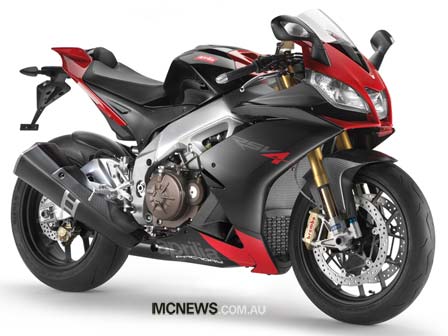
2009 model pictured
The superbike game has changed drastically since that time. Bikes have become blindingly quick and more tech-laden than ever, but like a young man who has spent the past decade or so in the gym and eating well, the RSV4 has matured into an athletic, muscle-bound beast but it hasn’t forgot the good manners and cheeky charm that won journalist’s hearts and rider’s wallets right when the GFC was in full swing.
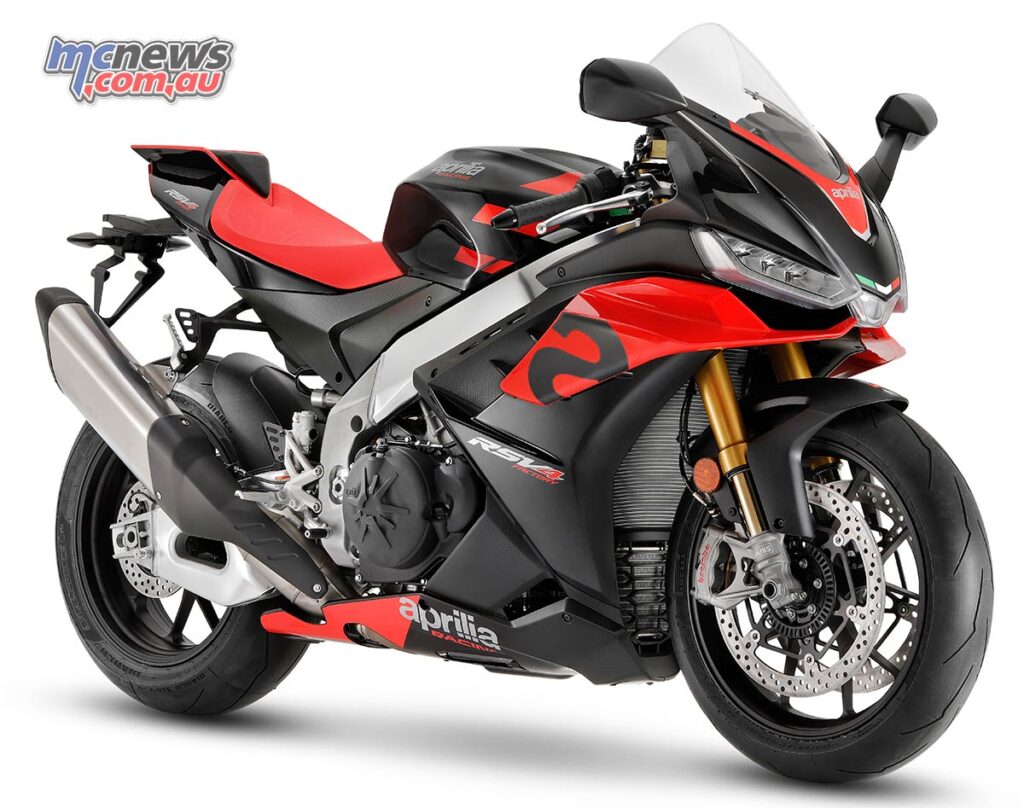
The new RSV4 has a similar feel to the original but, make no mistake, this is no simple Bold New Graphics makeover. You can ride away on the $31,290 base model RSV4 with cast aluminium wheels and conventionally-adjusted Sachs suspension, while the premium RSV4 Factory with lighter forged aluminium wheels and electronically-adjusted semi-active Ohlins Smart EC2 suspension will set you back $38,490 by the time you ride it out of an Australian Aprilia dealership this June. The RSV4 band of brothers is here to knock off arch rival Ducati in the Oversized Superbike Showdown.
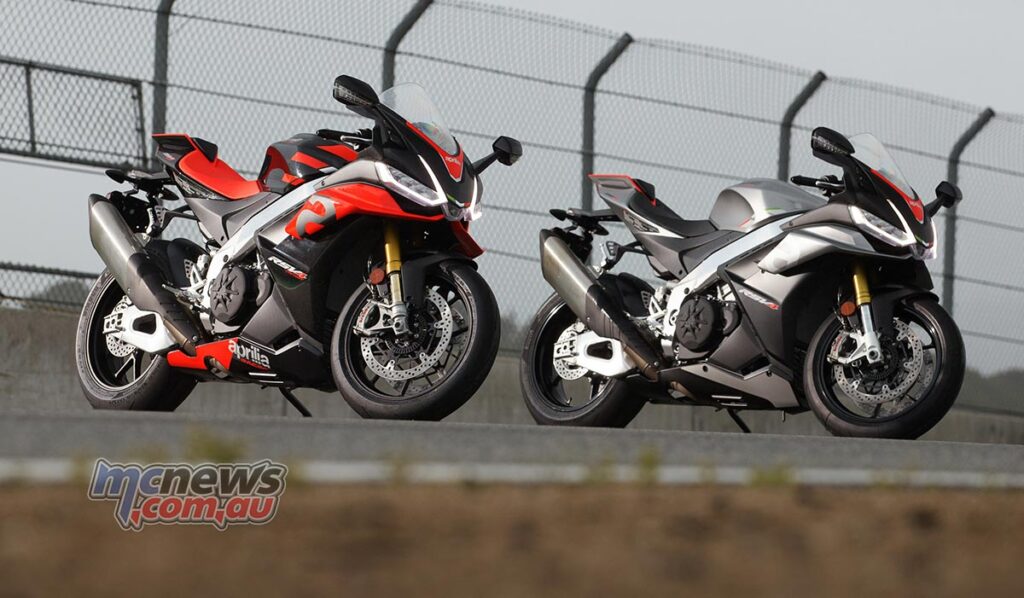
The only difference between the two models is the aforementioned wheels and suspension, and also paint choices (we’ll get to the benefits of the Ohlins vs Sachs in a tick). Everything else is the same across each bike, which includes a now 1099cc V4 motor with a lighter crankshaft packing a pants-tightening 217 hp at 13,000 rpm and 125 Nm or torque at 10,500 rpm.
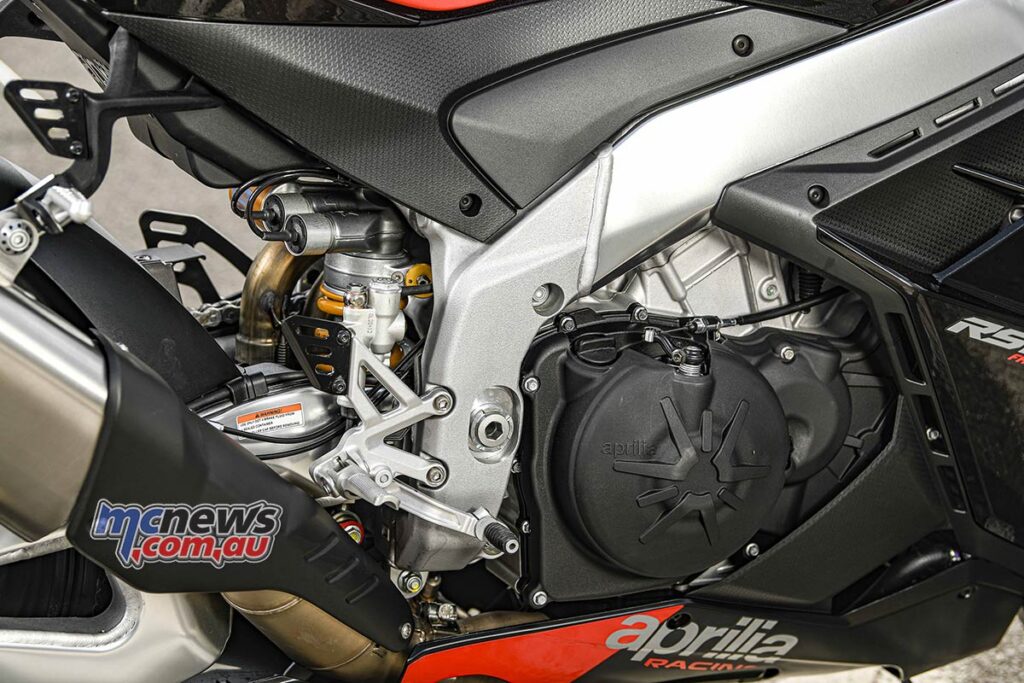
The great thing for Aprilia is they’ve managed to get the donk through the Euro5 emissions regulations without losing too much in the way of midrange torque. As the old saying goes, “if you want more inches, stroke it”, and that’s exactly what Aprilia has done by going from 52.25 mm to 53.32 mm to accompany the MotoGP-specific 81mm bore.
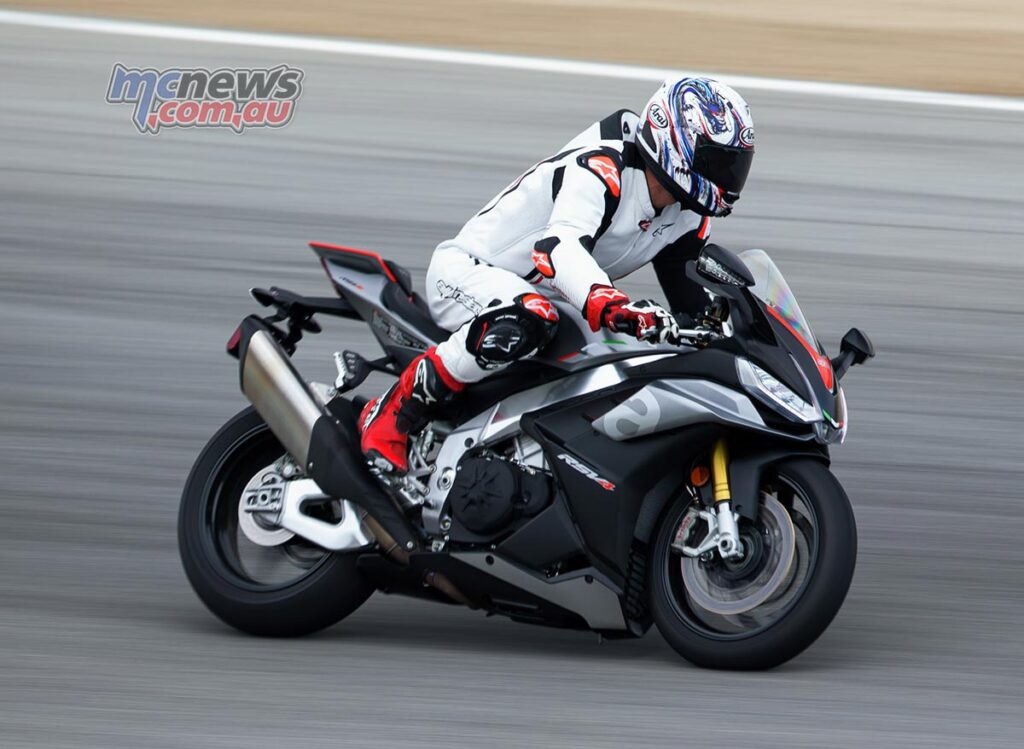
Compared to the 2020 RSV4, the ’21 edition maintains more torque from 4500 rpm right up 13,500 rpm, with a substantial increase from 5000 to 8000 rpm, right where you’ll spend most of your time on the street and right where manufacturers like Honda and BMW got so hurt with their Euro5 emissions performance block.
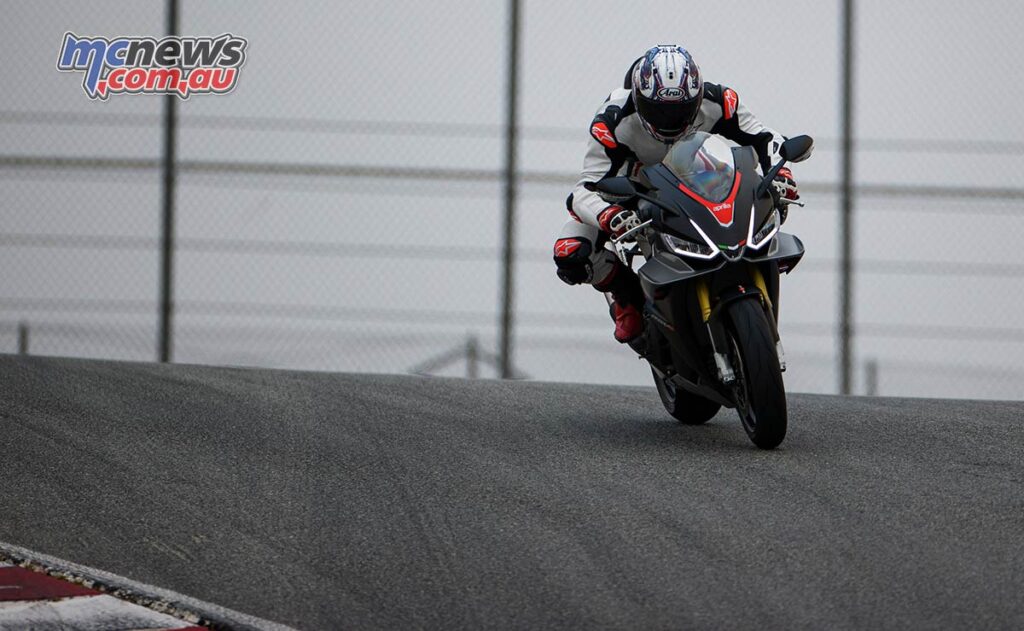
Without sounding like a regurgitated press release, I can tell you from the hot-seat that the new motor spins up with serious pace. From the almost dead stop of Turn 11 at Laguna Seca, the forward momentum delivered by the new motor is substantial. The ’21 rips through the rev range much quicker than before, although I will hold off on my opinion on absolute top end performance as Laguna’s front straight is about a quarter of what Mugello’s is like, where I rode the 2019 RSV4.
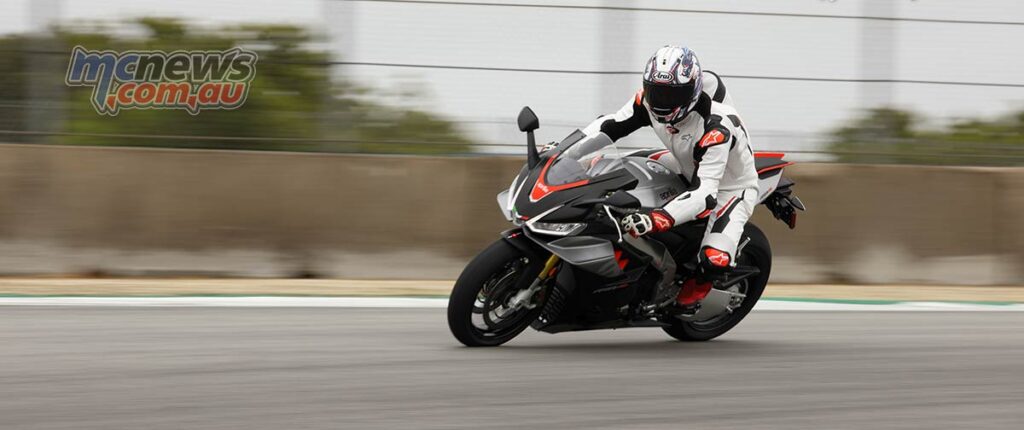
Helping this mammoth amount of power is the mix of new twin 48 mm throttle bodies, fuel injectors, new ECU and revised throttle maps via the Aprilia Performance Ride Control (APRC) suite. I’m not going to sit here and pretend like I know exactly what’s going on beneath me with regards to all those sparky things, but suffice to say the new bike, yes it’s faster, but the throttle is much smoother in how it applies the torque to the tyre, which makes just getting on with the job of riding that much easier.
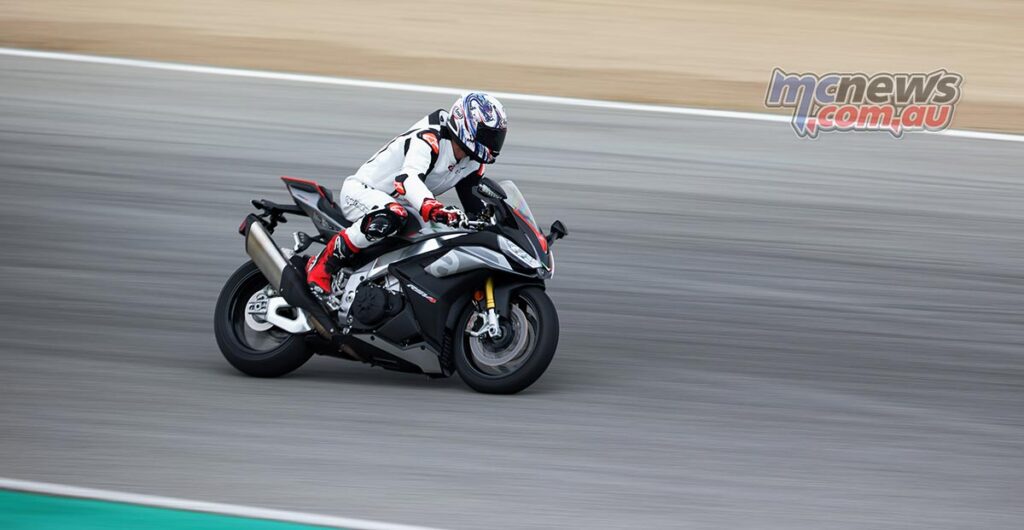
The electronics at last feature engine brake control, bringing the RSV4 into line with the bike that was modelled on it in the RS 660, and gives the RSV4 equal footing with the current generation of superbikes. The APRC system, complete with its Bosch IMU, features three preset riding and three programmable modes in which you can alter everything from engine braking to traction, launch, and wheelie control, Cornering ABS, slide control, cruise control, and Aprilia has developed an all-new quick-shifter for utterly seamless full power gear shifts.
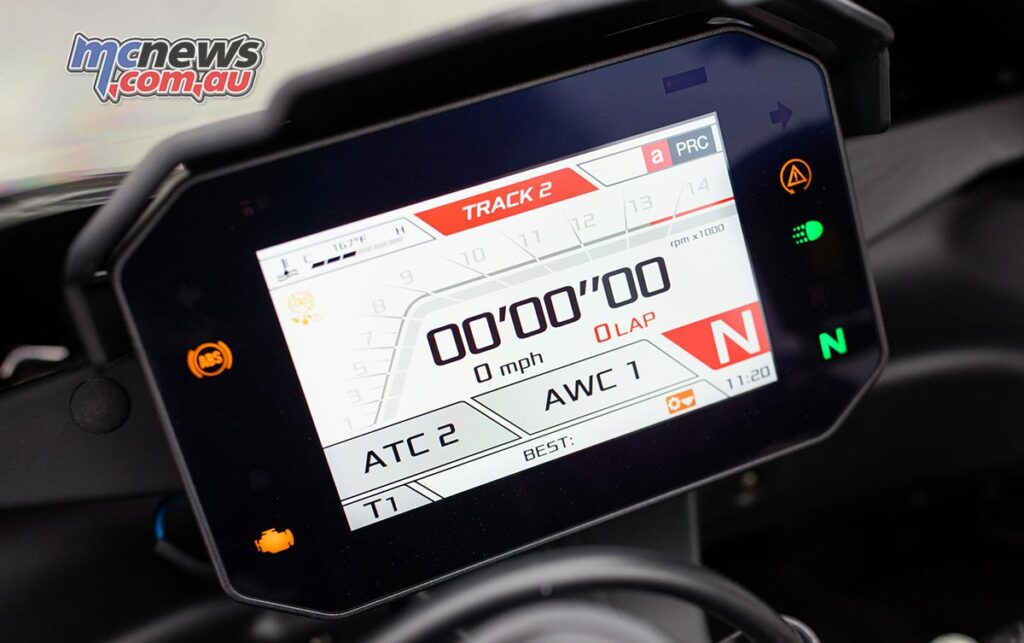
Aprilia’s crammed a shitload of information into the five-inch TFT dash, but like the APRC systems that have gone before the ’21 edition, Aprilia’s engineers have done an excellent job on the user experience and design interface so you can get to the settings you want quickly, make the changes you want and just get on with riding.
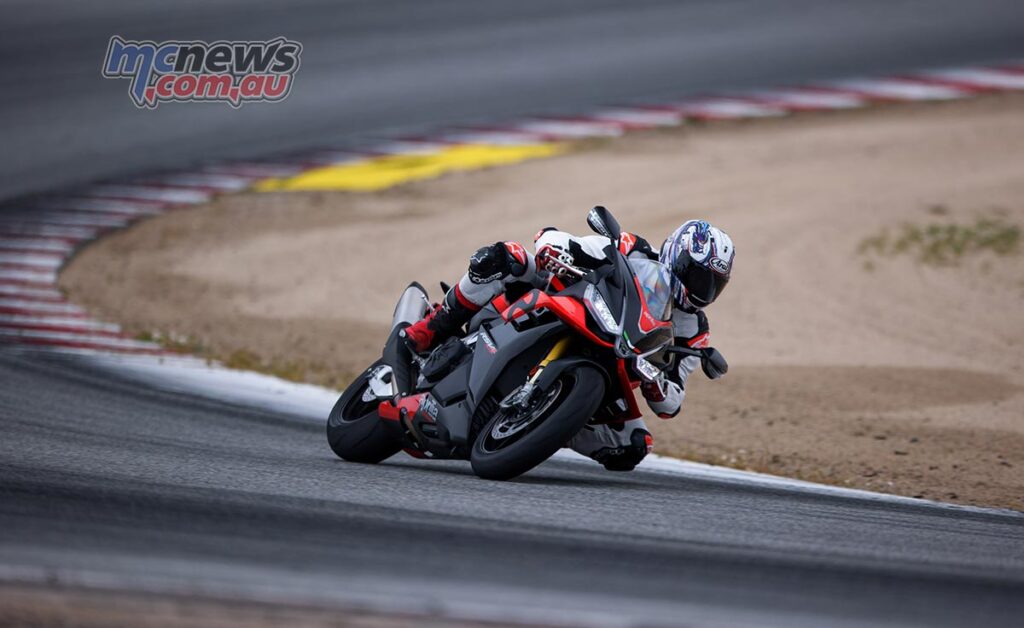
The motor and the electronics are impressive, but what stands out more is what made the original RSV4 so good—its ability to decimate corners. Aprilia has fitted their first production inverted swingarm for the ’21 RSV4, which they claim is a massive 30 percent stiffer and saving 600 grams of unsprung weight. The result is the RSV4 gives such beautiful feel on the side of tyre, especially when you start dialling the power back in past the apex.
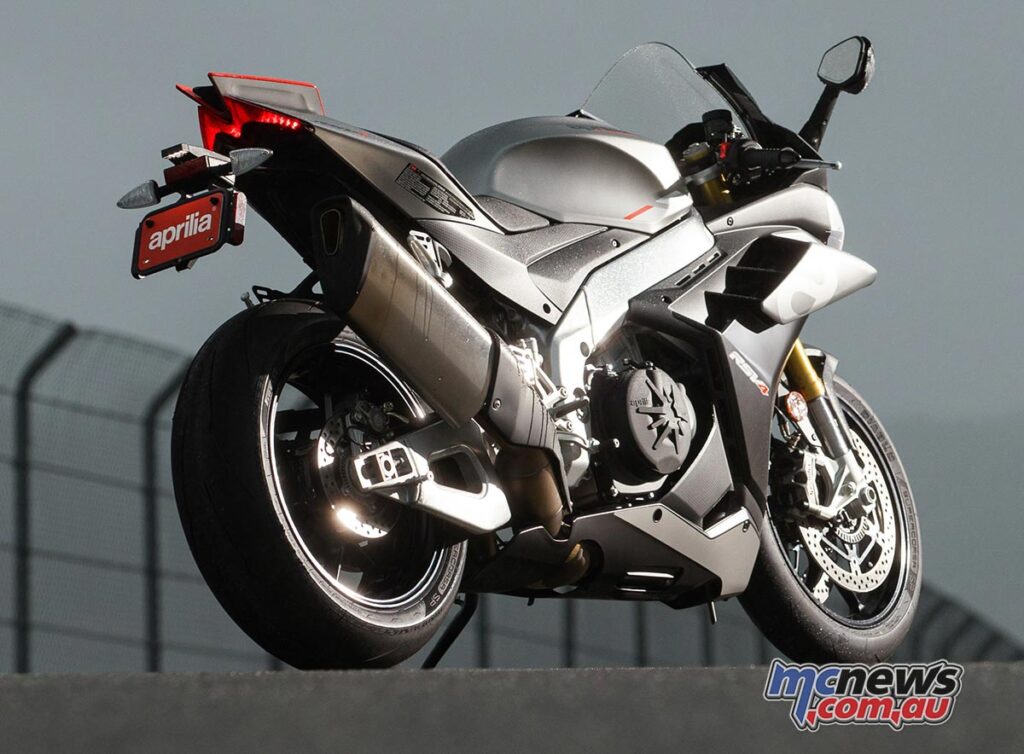
The 2019 edition was no slouch here, but it used technology and thinking from a number of years ago. The inverted swingarm theory was taken from Aleix Espargaro’s RS-GP machine and was clearly a masterstroke, helping the RSV4 rail with the fluidity of a 600 but the power of a (bigger) superbike.
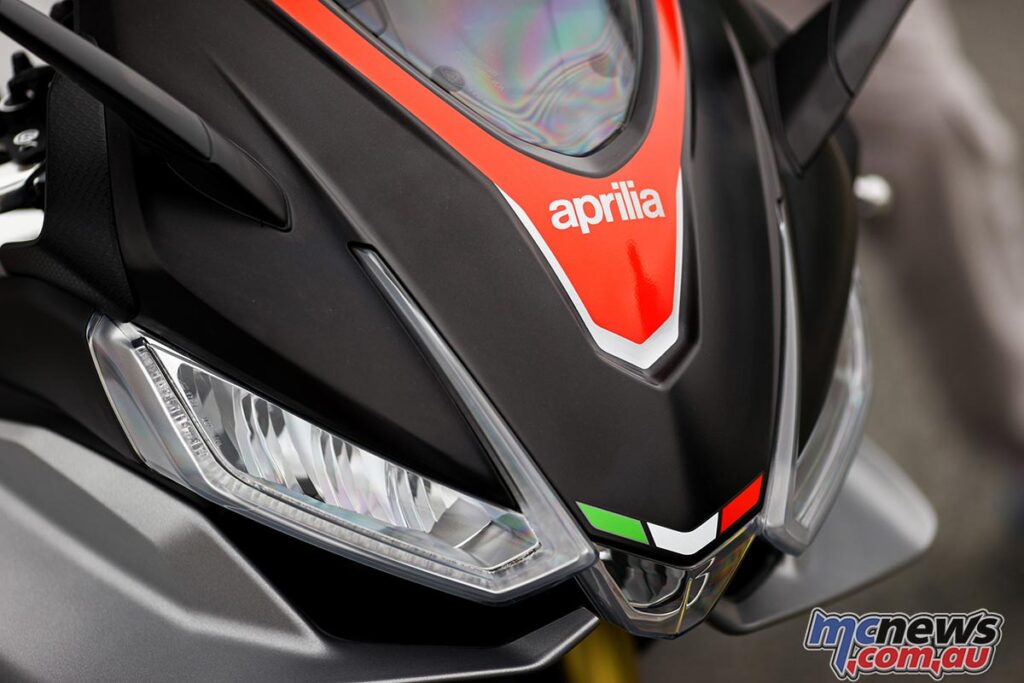
Aprilia’s really gone to town on the aerodynamics for the RSV4. New LED lights, similar to the RS 660, adorn the front of the bodywork, while revised downforce winglets either side of the fairing help keep the front wheel down under acceleration and increase braking stability when it’s time to heave on the Brembos.
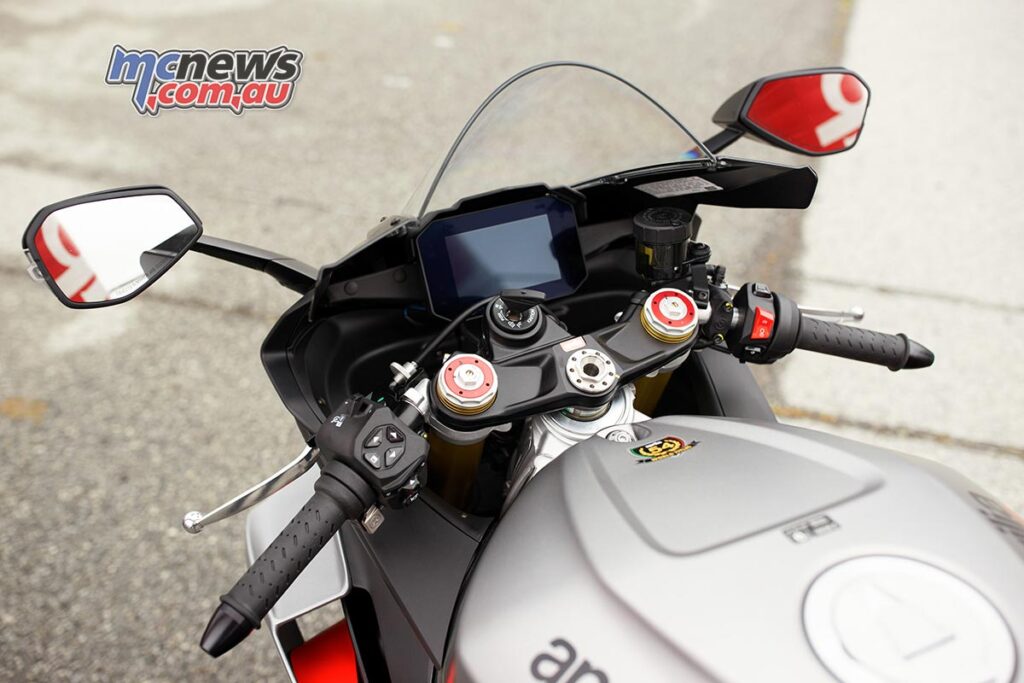
A wider windshield and an increased area for your chin to sit on when in a full tuck has been developed, and makes this iteration far more comfortable and less tiring to ride. To that end, the engineers have lowered the seat height by nine millimetres and the foot-peg position is 10mm lower, while amazingly giving you an extra 1.5-degrees of lean angle when cornering, not taking 1.5-degrees away.
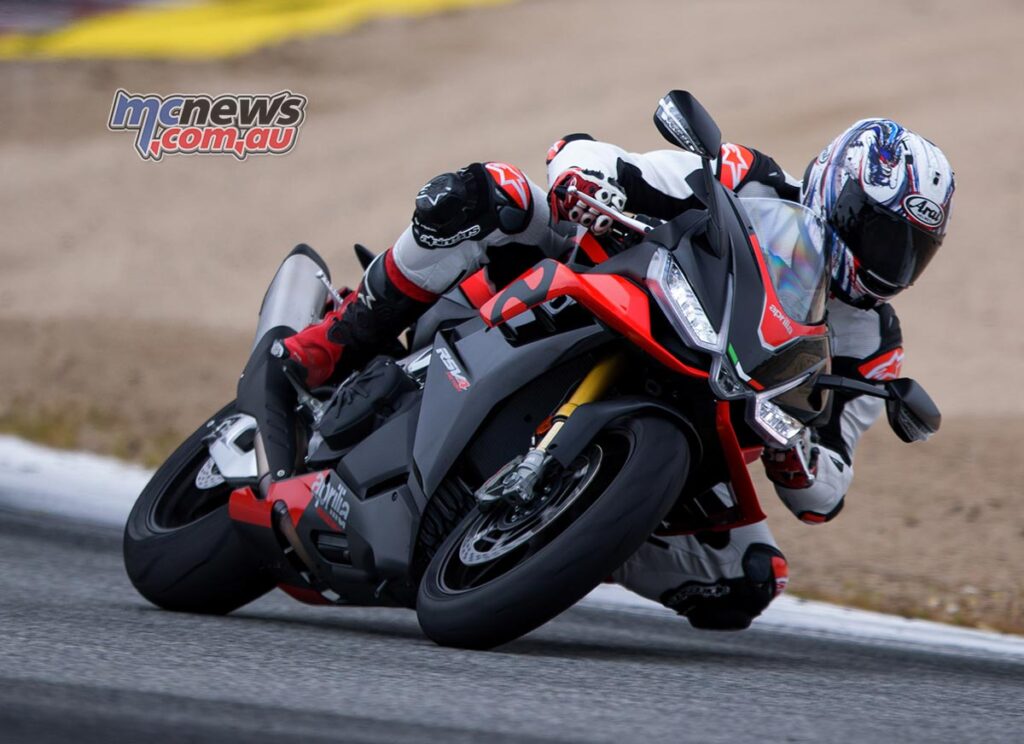
You don’t feel as cramped on the 2021 RSV4, which is something taller riders will love. The original development rider for the RSV4 was pint-sized Max Biaggi—in fact you could say the RSV4 was made for Max so he could go and win Aprilia a couple of WorldSBK crowns. It now appears Aprilia is listening to riders of taller stature, as at 183 cm tall I found the new machine to be an almost ideal fit.
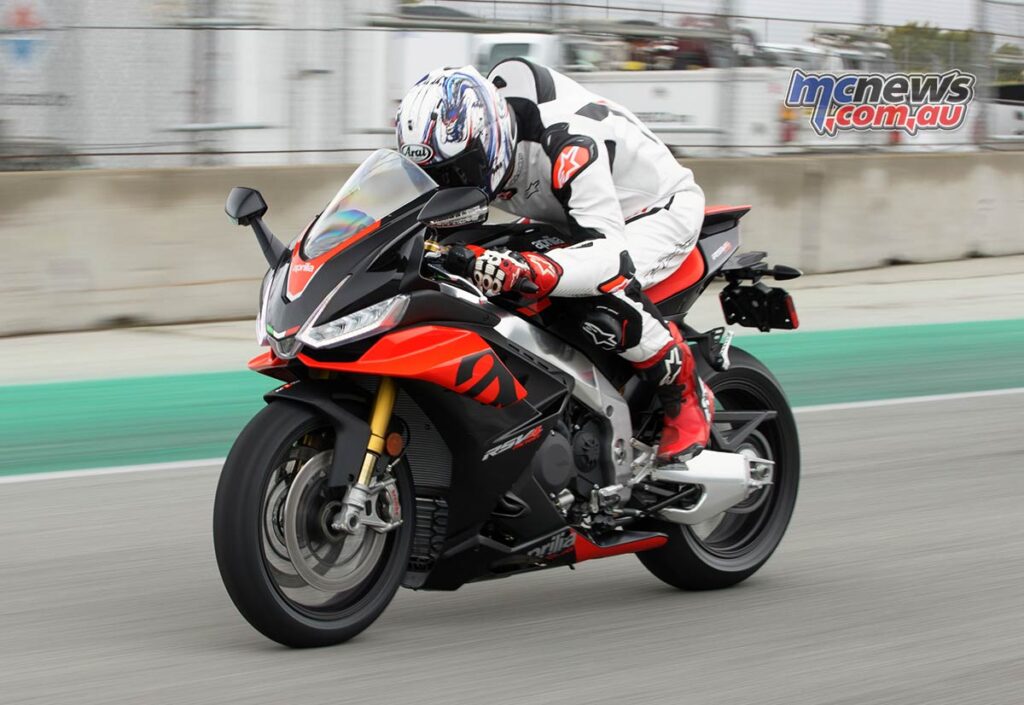
Now. The big elephant in the room. Is the Factory still worth the dosh over the base model? Yes. But there’s a but.
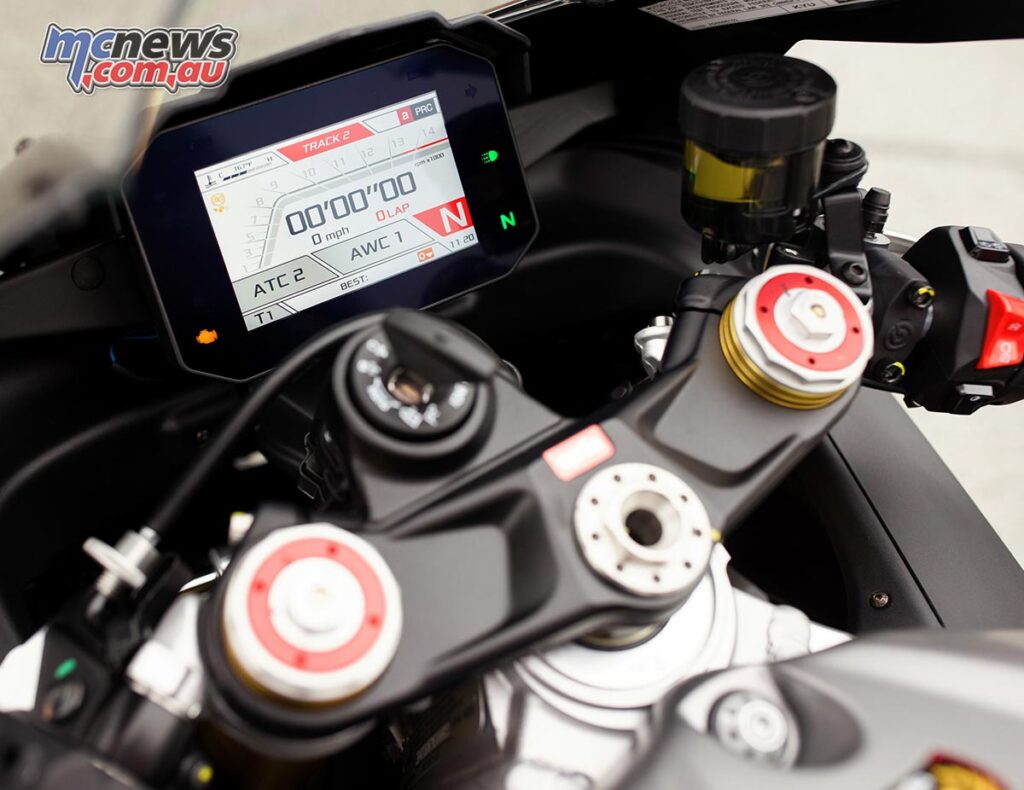
I remember when I was at AMCN years ago and we rode the base and Factory back-to-back and within two corners you could tell everyone would go for the Factory. But that was before the advent of electronic suspension, and in that time the Sachs suspension has improved out of sight.
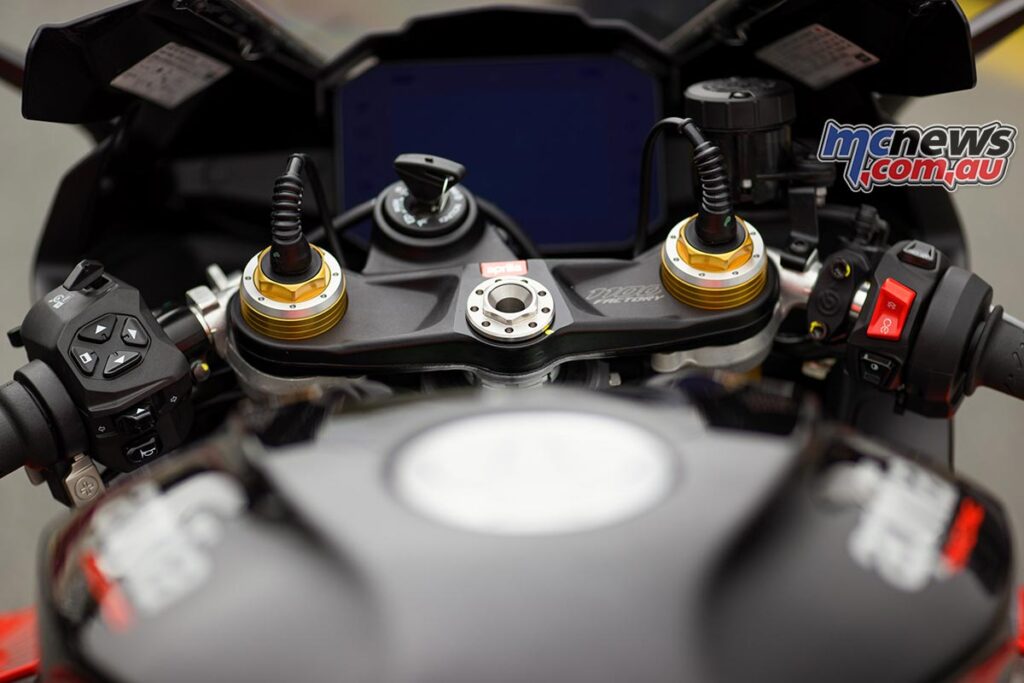
While sending it around Laguna, I was perfectly happy with the base model’s conventional suspension. I knew exactly what was happening as I didn’t have the computer constantly changing the suspension beneath me, like what happens when you’re in dynamic mode on the Factory.
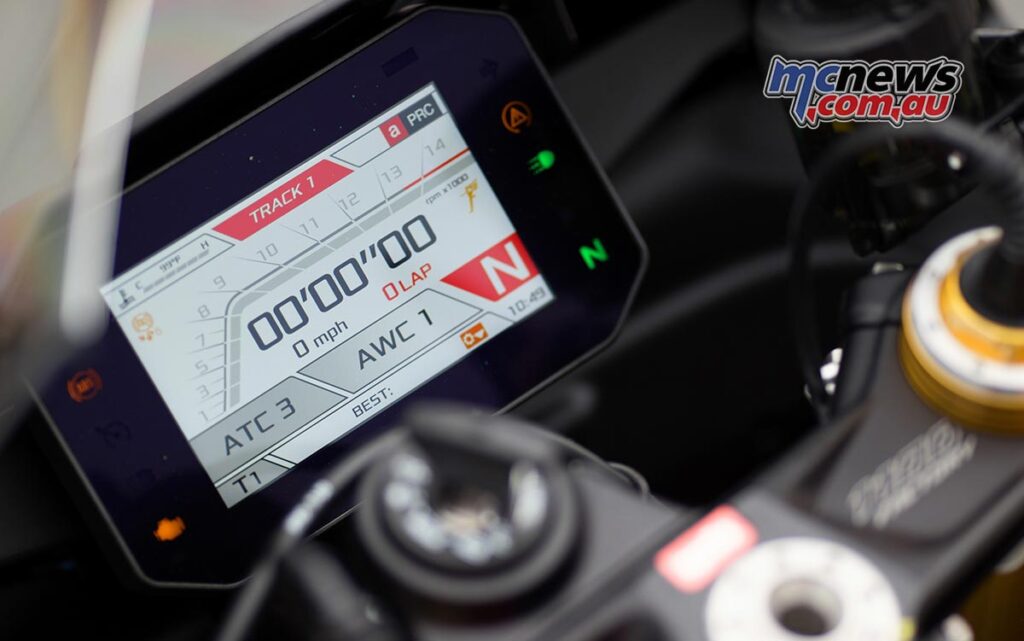
The base model was quite the revelation, but once we put the Factory in manual mode on the dash where you could individually pick your rebound/compression, the ride became much more predictable. That allowed the lighter wheels on the Factory to really shine in the change of direction, giving the Factory a clear advantage over the base model.
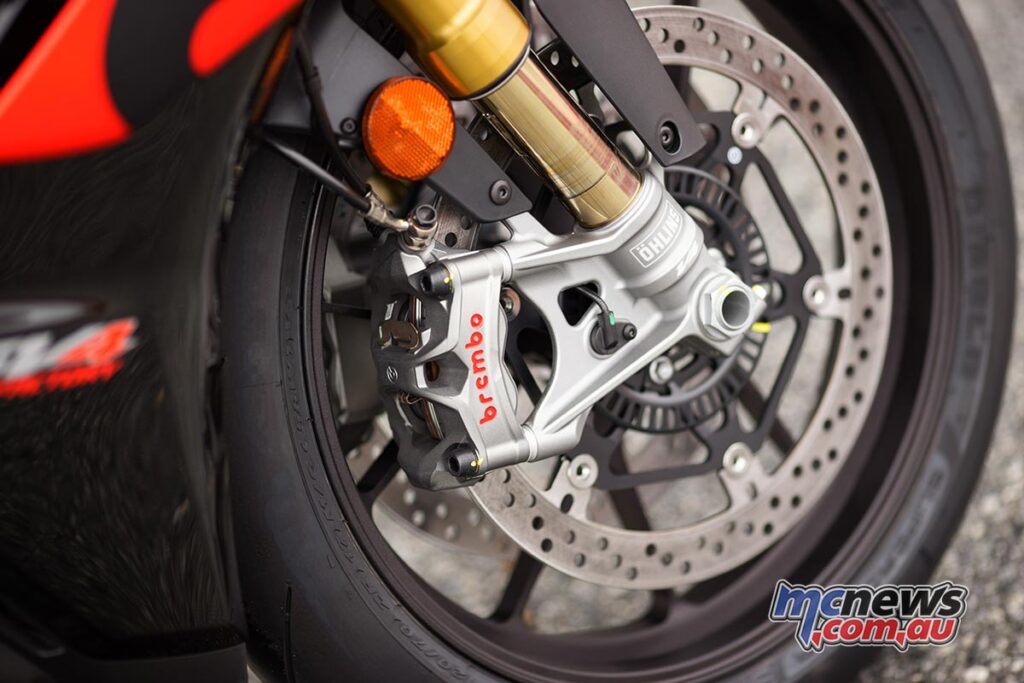
However, the difference is not as big as you may think, and if you don’t need electronic suspension (which I suspect many do not), you’d be just fine to save your cash and go for the base model (and buy some lighter wheels with the money you’ll save because god knows you don’t need to make the engine faster).
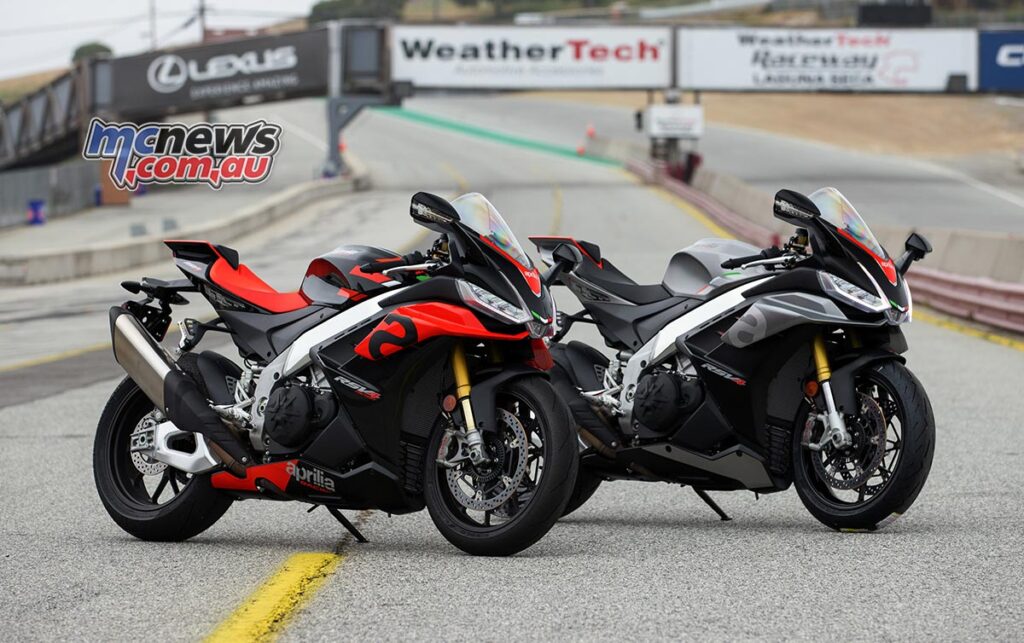
I must admit I’m a little disappointed in the colour option for the base in the rather drab grey and silver, whereas the Factory gets two choices of Aprilia’s traditional racing colours of purple, black and red or the current MotoGP-style black and red. For that reason alone, I think more riders will gravitate towards the Factory, but don’t let that saw you alone because the base RSV4 is a truly excellent machine.
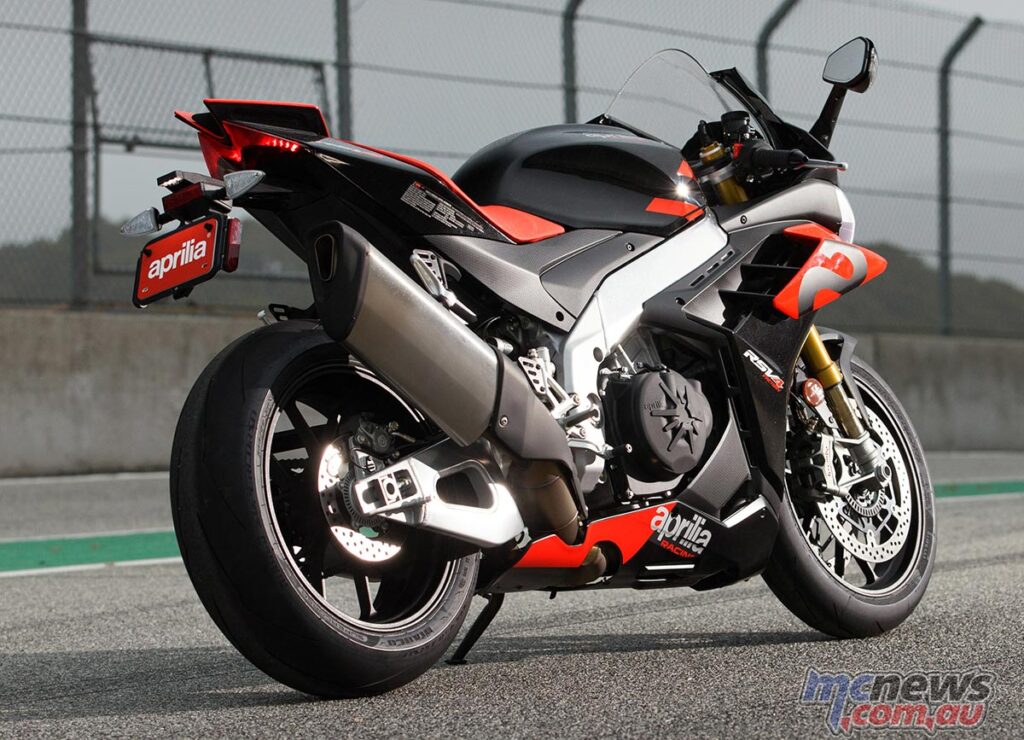
Aprilia’s really nailed this one. They’ve modernised an already classic superbike design and made a compelling case for top Italian superbike (or top superbike overall, for that matter). It sounds incredible, goes like a bat out of hell and rails corners like no one’s business, be it in base or Factory modes. Every couple of years the superbike moves a step forward, and the RSV4 is certainly at the head of this year’s class.
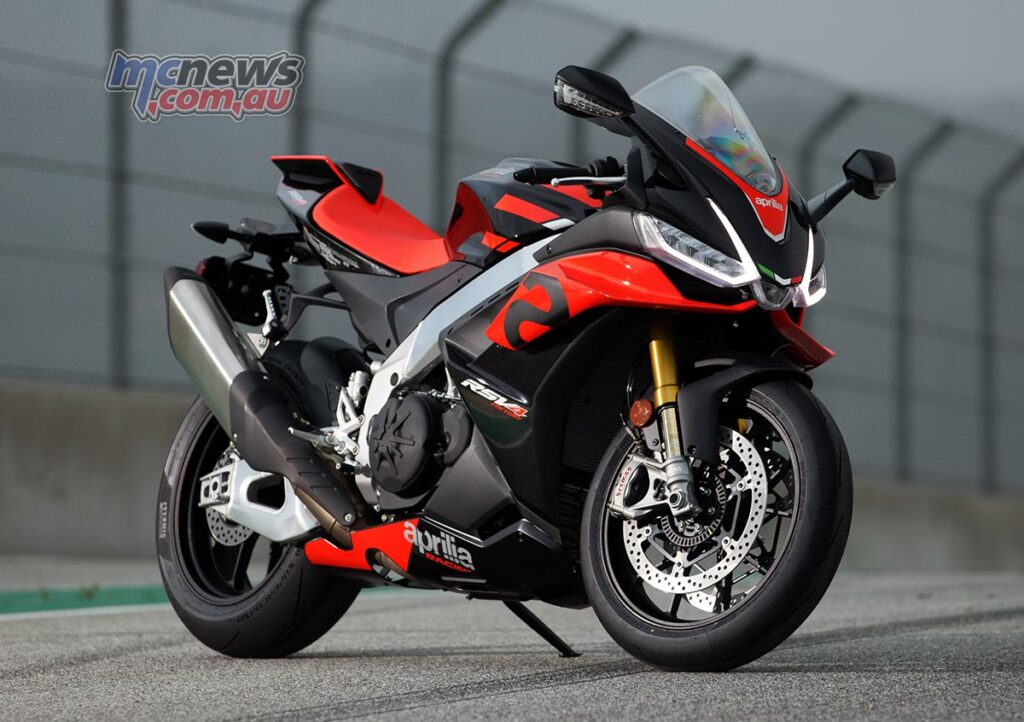
| Aprilia RSV4 Factory: Technical Specifications [RSV4 data in brackets] | |
| Engine type | Aprilia 4 longitudinal 65° V4 cylinder, 4-strokes, liquid cooling system, double overhead camshaft (DOHC), cooling system, double overhead camshaft (DOHC), |
| Bore and stroke | 81 x 53.32 mm |
| Capacity | 1,099 cc |
| Compression ratio | 13.6:1 |
| Power | 217 HP (159.5 kW) at 13,000 rpm |
| Torque | 125 Nm at 10,500 rpm |
| Power supply | Airbox with front dynamic air intakes. 4 Marelli 48-mm throttle bodies with 8 injectors and Ride-By-Wire engine management. |
| Transmission | 6-speed cassette type gearbox Gear lever with Aprilia Quick Shift electronic system (AQS) |
| Clutch | Multi plate wet clutch with mechanical slipper system |
| Primary drive | Straight cut gears and integrated flexible coupling, drive ratio: 73/44 (1,659) |
| Secondary drive | Chain: Drive ratio: 41/16 (2,562) |
| Controls management | APRC system (Aprilia Performance Ride Control) that includes engine maps (AEM), engine brake control (AEB), traction control (ATC), wheelie control (AWC), launch control (ALC), cruise control (ACC), speed limiter (APT). 6 riding modes (3 Road, 3 Track) |
| Chassis | Aluminium dual beam chassis with pressed and cast sheet elements Available adjustments: headstock position and angle, engine height, swingarm pin height Smart EC 2.0 electronically managed Öhlins steering damper [Sachs steering damper] |
| Front suspension | Smart EC 2.0 electronically managed Öhlins NIX fork. ∅ 43 mm stanchions, with TIN surface treatment Aluminium radial calliper mounts, adjustable in hydraulic compression and rebound damping and spring pre-load, 125 mm travel [Sachs fork ∅ 43 stanchions, adjustable compression and rebound, travel 127 mm] |
| Rear suspension | Upside-down double braced aluminium swingarm; Öhlins TTX monoshock with Smart EC 2.0 electronically managed piggy-back, fully adjustable in: spring pre-load, wheelbase and hydraulic compression and rebound damping. 115 mm travel [Sachs] |
| Wheels | Forged aluminium alloy wheels, completely machined, with 5 split spoke design. [Aprilia in aluminium alloy wheels with 3 split spoke design]. Front: 3.5”x17” Rear: 6”x17” |
| Tyres | Front: 120/70 ZR 17 Radial tubeless. |
| Rear: 200/55 ZR 17 (alternative: 190/50 ZR 17; 190/55 ZR 17) Radial tubeless. | |
| Dimensions | Wheelbase: 1435.8 mm |
| Length: 2055 mm | |
| Width: 735 mm | |
| Saddle height: 845 mm | |
| Headstock angle: 24.6° | |
| Trail: 104.5 mm | |
| Kerb weight | 202 kg (90% fuel) |
| Emissions compliance | Euro 5 |
| Consumption | 6.90 litres/100 km |
| CO2 emissions | 160 g/km |
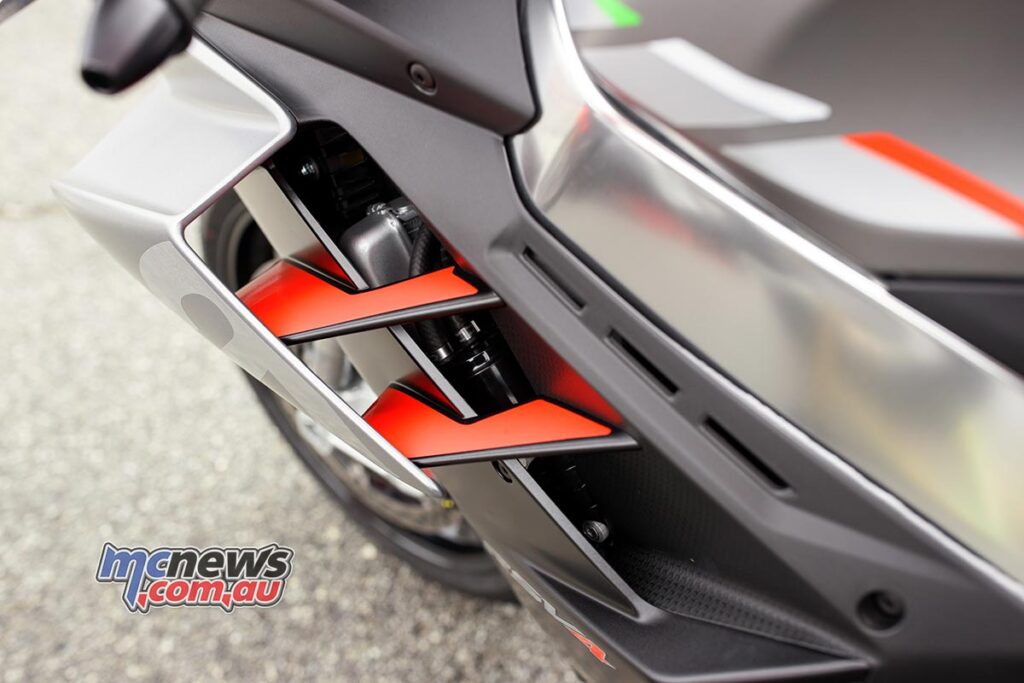
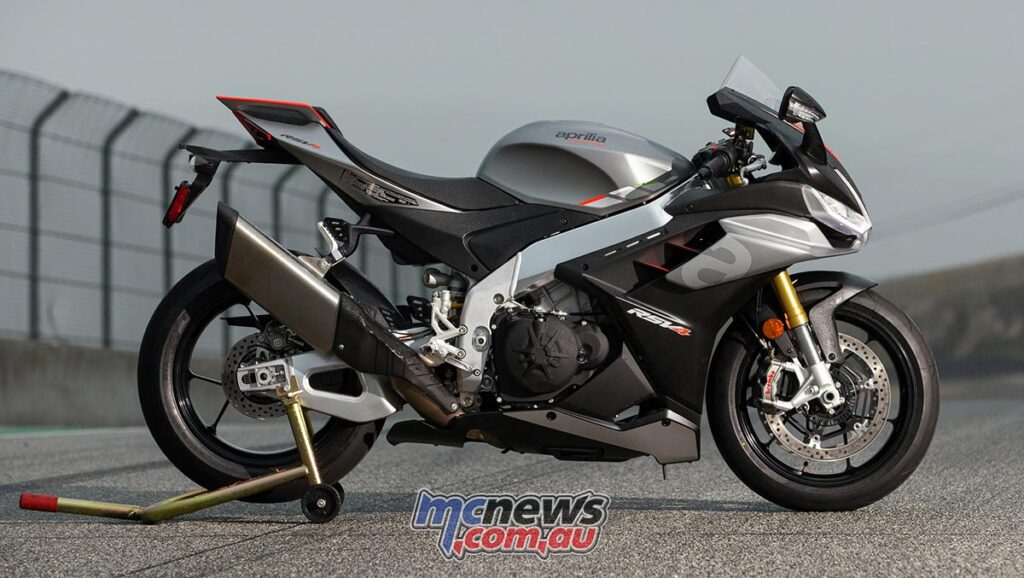
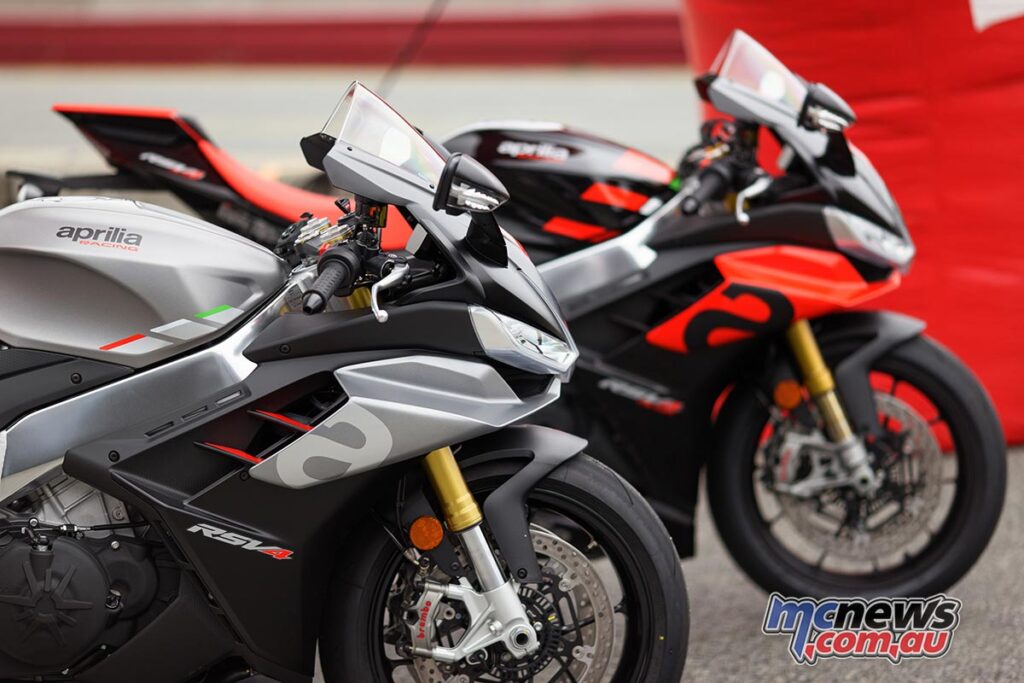
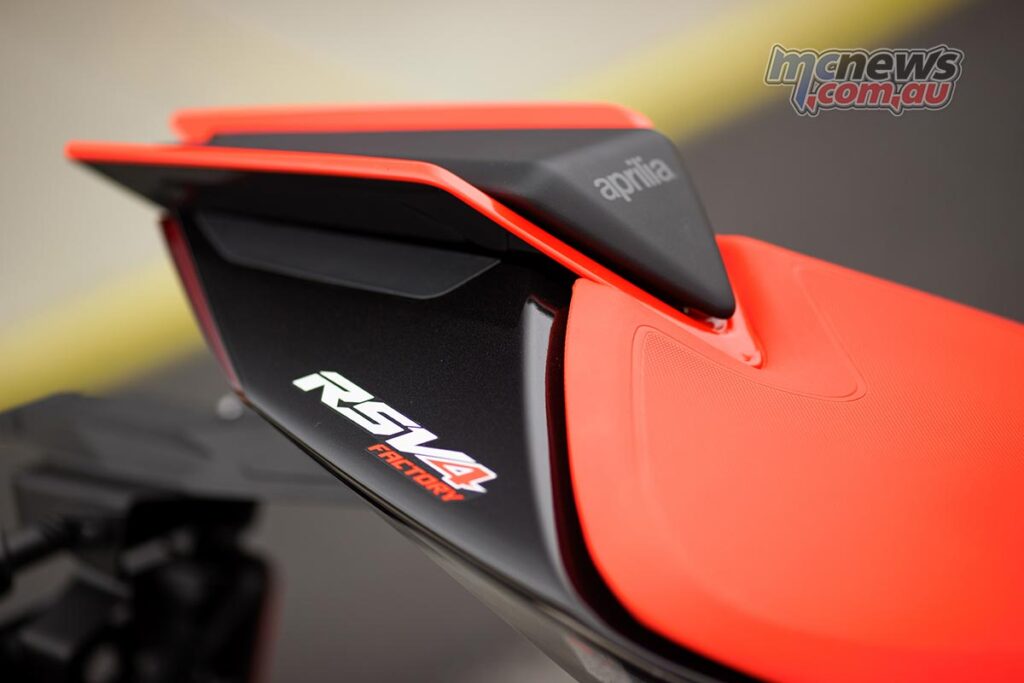
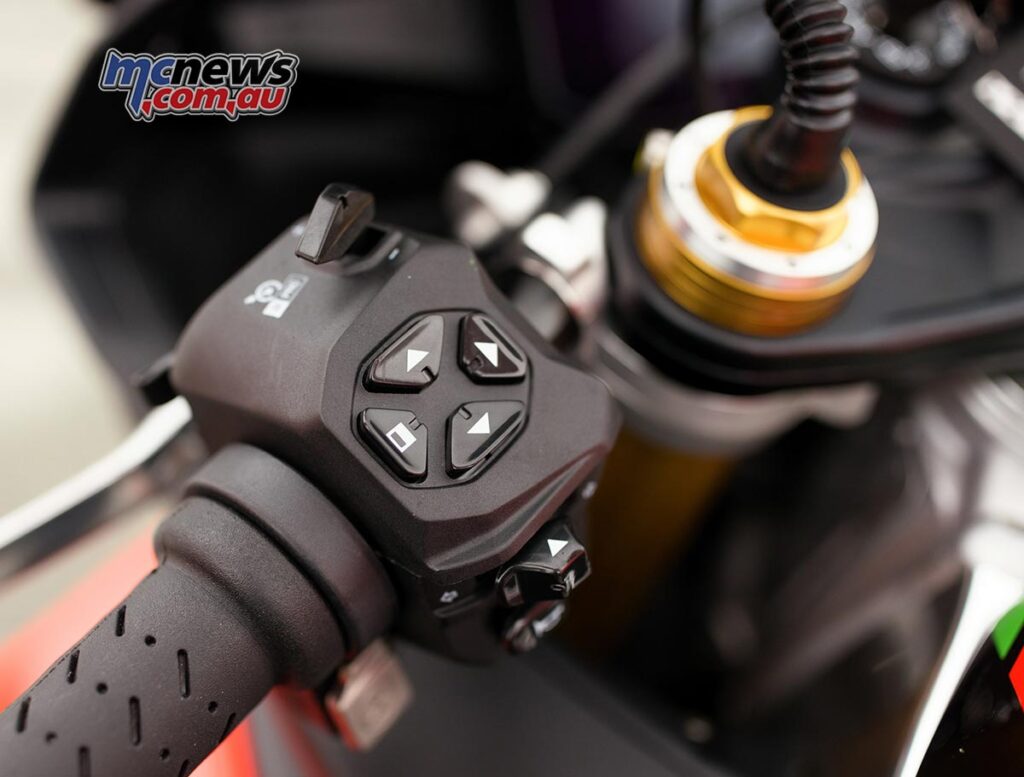
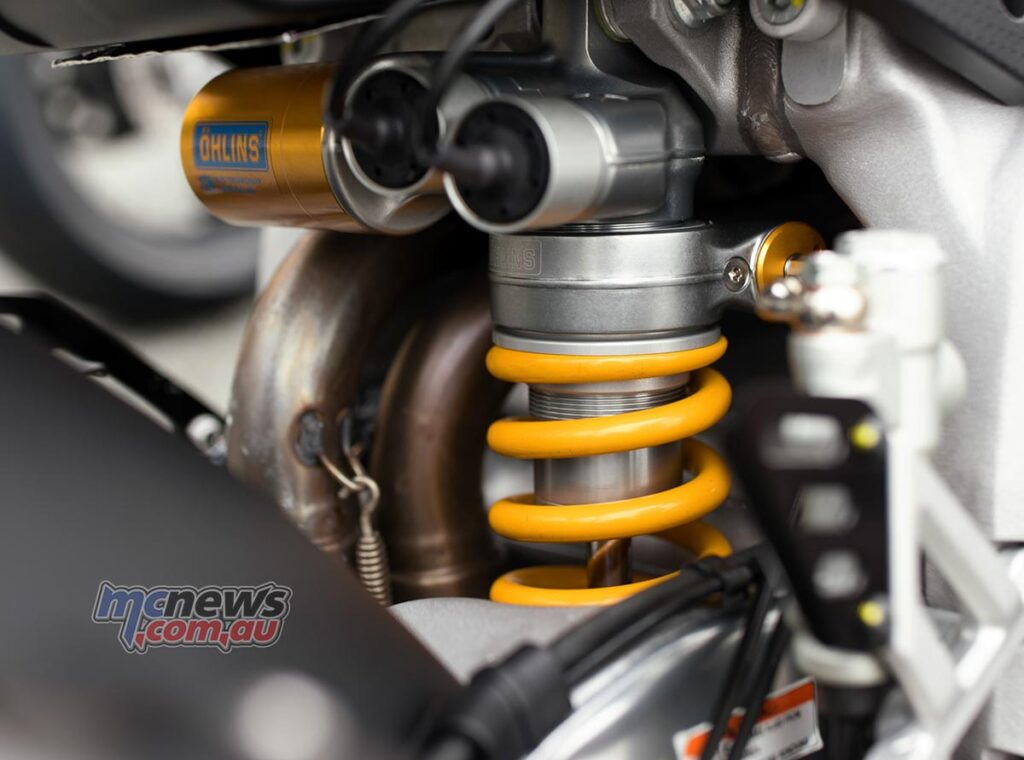
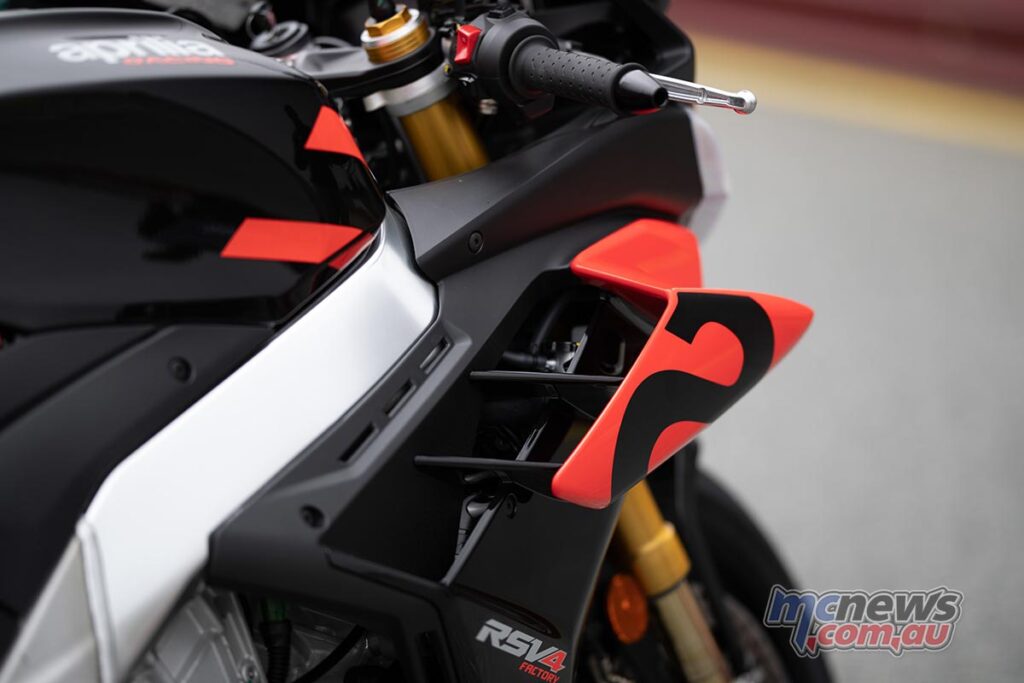
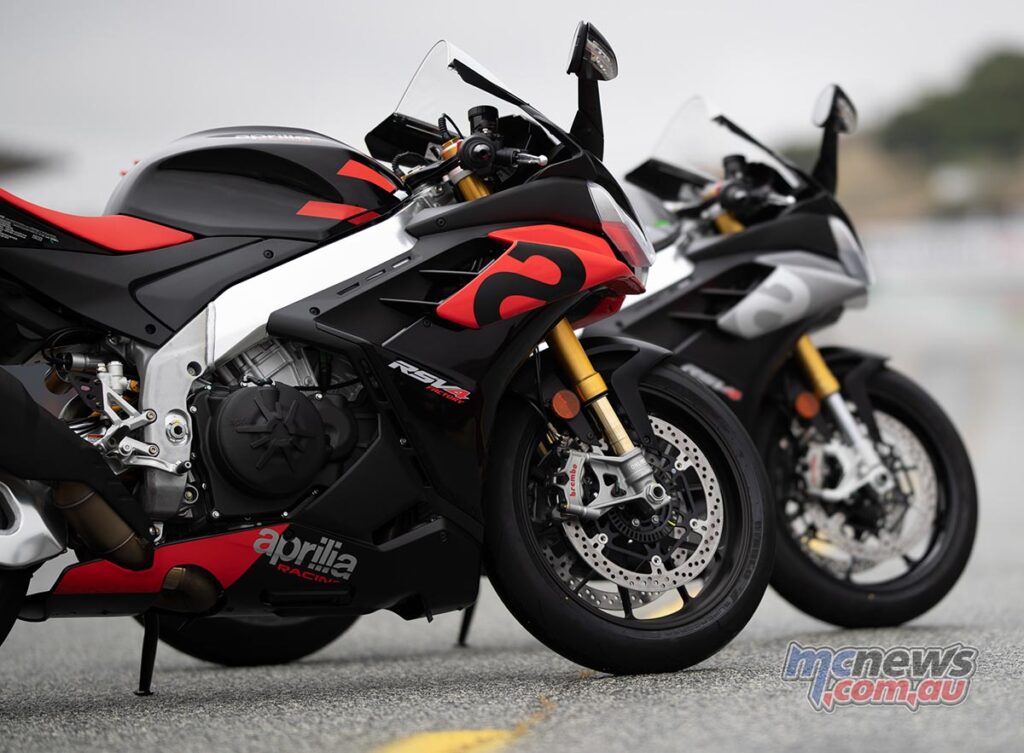
Photography by Larry Chen








